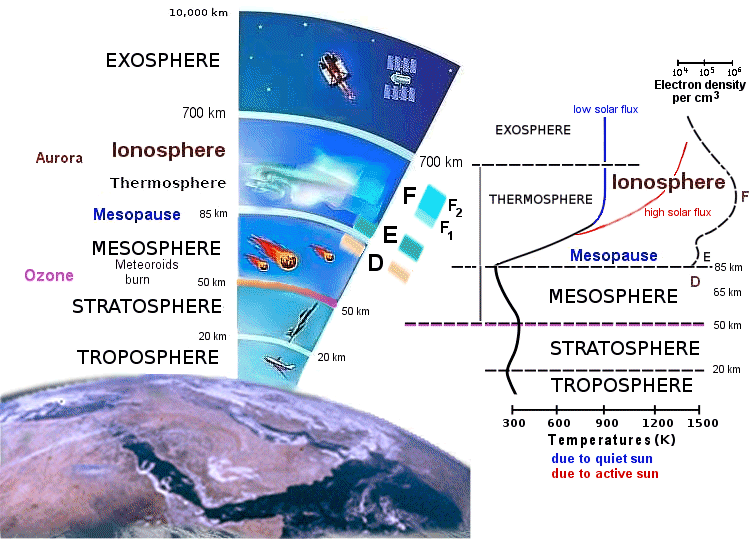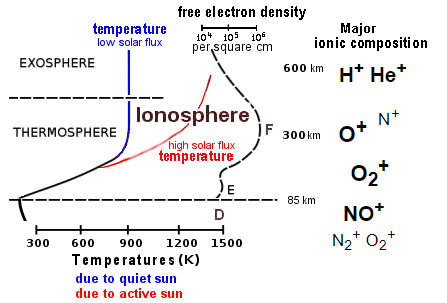
 What are ionospheric conditions?
What are ionospheric conditions?
Ionospheric conditions refer to the physical state of the ionosphere, a region in the upper-atmosphere that meets space (exosphere).
A mixture of free electrons and ions (known as "plasma") is created when solar radiation ionizes gases 48 to 800 km above the surface of the earth.
This region is ionized by solar radiation, meaning it contains a high concentration of free electrons and ions. The physical conditions of the ionosphere affect the HF radio propagation conditions.
The ionospheric physical parameters are: temperature distribution, free electron density, pressure, gas density and compositions, chemical reactions, and transport phenomena (horizontal and vertical winds), as illustrated below.
Not shown on the right figure: |
Charge transfers between atoms and ions (N2, O2, N2+, O2+, O+, NO, NO+) affect the dynamics of the D and E regions.
The ionospheric physical conditions change with 24-hour cycles, geographical locations, seasons, and solar activity. They affect the critical parameters for skywave propagation, as discussed below.
- Time of day: The ionosphere is more ionized during the day due to direct exposure to solar radiation. At night, the ionization levels decrease.
- Geographical locations: Different regions of the Earth experience varying levels of ionization based on their position relative to the sun.
- Seasonal Changes: The ionosphere’s density and composition can vary with the seasons, affecting its ability to refract radio waves.
- Solar activity: The sun’s ultraviolet (UV) and X-ray radiation ionize the atoms and molecules in the ionosphere. Solar flares and geomagnetic storms can significantly alter ionospheric conditions.
These conditions are monitored and predicted to ensure reliable communication and navigation, especially for high-frequency (HF) radio systems and GPS.
Read a Summary of the theoretical topics of HF radio propagation. See also an index of terms for HF Radio propagation.
shows near-real-time indices and explains what the terms mean.

